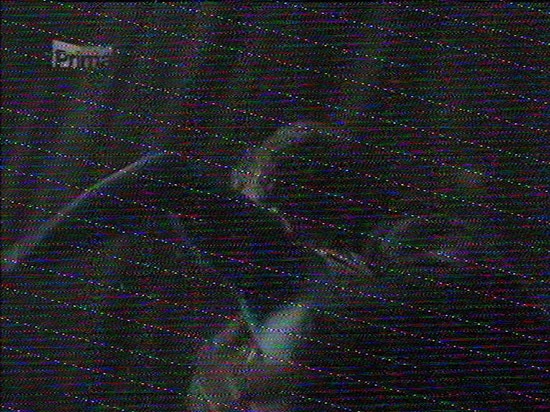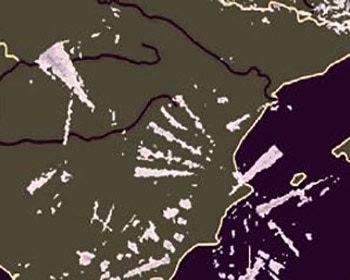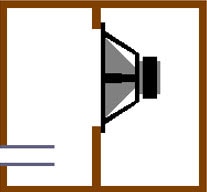Taming EMI and RFI
2024-04-17 | By Antonio Velasco
Working on my University's CubeSat team, I've been mainly involved with the communications system for our 2U satellite, AntSat. Something that's arisen multiple times as we've worked on our antenna and transceivers is minimizing electromagnetic interference (EMI) and radio-frequency interference (RFI). This invisible, yet crippling, phenomenon can be detrimental to our system, and it's important for us to combat it appropriately. Let's talk about what EMI and RFI is and how it can affect your projects.
EMI and RFI
EMI and RFI are commonly looped together or used interchangeably, but in reality, they are two distinct challenges that need to be addressed independently. EMI is practically any interference within the electromagnetic spectrum, ranging from gamma-ray to X-ray, whereas RFI is specifically interference in the wavelengths unique to Radio Waves. Think of EMI as the broad term and RFI as a type of EMI.
It's much harder to combat EMI as it requires a myriad of techniques since it's practically everything you're trying to block out. This includes physical barriers, radiation shielding, noise dampeners, and much more.
RFI tends to require more signal filtering and absorption, in comparison. This takes more thought into the design and how each item interacts with each other.

EMI/RFI can show up as "noise," whereas in a picture it can be sort of distorted, or on phone calls where there's static or a crunchy noise. This, of course, is not optimal, and especially for ultra-important communications, it is necessary to combat such interference.

Here's an example in which Cell Towers causes a weather radar to see traces that should not be there. Interference from these Cell towers causes the radar to believe that something is there. Notice how the "clouds" are uniformly aligned to how a cell tower would span its signal.
EMI/RFI is extremely relevant today as practically every electronic device emits some sort of wave that causes interference. Everybody's phone is constantly connecting with a cell tower, power lines surround us everywhere we go, and even cars produce a relevant enough hum to create interference. As such, there is an extreme need to keep all of this under control and to protect your projects from being harmed by it.
It's not only important to make sure that your projects aren't affected by signal degradation, but equally as important to make sure that your project isn't the cause for ruining other people's signals. There are rules and regulations in place that relate to the devices we may make, and as such, must be followed--else we risk disrupting the spectrum and becoming an unintentional "signal jammer."
How Can This Be Combatted?
As this has become an extreme problem recently, a myriad of combative measures has arisen. Let's first look at EMI:
- Ferrite beads and filters are a great example of how signals are filtered through cables and from the input to the receiver. I go more into detail about them in my blog here.

- Shielding techniques are likely the most important when it comes to physically deterring any signals or waves in the air. This is something that our team employs a lot for our CubeSat, and there are multiple methods to do so. DigiKey sells EMI-resistant shielding, along with coatings and enclosures for such. One example is a Faraday cage, which allows no external waves in (but also no waves out.)

We look at EMI combat as more of a physical keep-everything-out type of practice. RFI, specifically, looks more into the signals and design portion:
- Bandwidth Filtering is important in order to limit the frequencies that such a system receives. This is likely the most common type of anti-RFI method since it's what needs to be employed to even receive a signal.

- Proper grounding practices are also essential in quelling this phenomenon. It's important to maintain efficient and stable points for such components and circuits to be grounded, and to thus create a "shield" that takes any unwanted current and forces them into the ground. It's a bit like a reservoir.
- Balanced lines and signals are also important in order to cancel out noise and interference. This is employed by two opposite, balanced conductors which cancel each other out.
- Design Choices are another impactful way to prevent RFI, with how the Antenna is designed and placed. This is something that we consider a lot in our CubeSat communications team--especially when it comes to our antenna. For example, we're making sure to keep our overall communications antenna on the opposite side of the GPS system in order to minimize any interference.
While there are a great deal of ways for projects to be interfered with and thus interrupted, there are a lot of proven and impactful methods to combat this. In such a world with so many opportunities for things to go wrong, it's important to account for every scenario and ensure that your projects are properly shielded to ensure both efficiency and quality.
Have questions or comments? Continue the conversation on TechForum, DigiKey's online community and technical resource.





